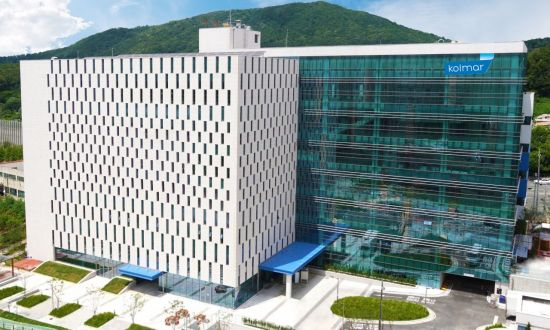
Panoramic view of Kolmar Korea headquarters. / Photo = Kolmar Korea
According to a disclosure by the Financial Supervisory Service on the 13th, Kolmar Korea's factory utilization rate was 120.3% as of the third quarter of last year, exceeding its capacity. This was due to a rush of orders as the company exported more K-beauty products.
A Kolmar Korea official emphasized, “Last year, the factory’s operating rate exceeded 100% due to increased exports,” and “We are currently focusing on increasing productivity by expanding our factory facilities domestically and internationally.”
As additional orders are hard to come by, Kolmar Korea is tightening the reins on expanding its capacity (CAPA). The company plans to put the newly expanded Sejong 1 plant into full operation in the first half of this year. The expansion is expected to increase the company's cosmetics production capacity by more than 20 percent.
Securities analysts expect the company's increased production capacity to drive sales this year. “The domestic CAPA will increase by more than 20 percent this year, adding to the effect of the expansion,” said Park Eun-jung, a researcher at Hana Securities. ”The company is expected to respond smoothly to the increase in orders this year as its production capacity is steadily expanding.”
“With the completion of the line expansion at the Sejong plant, the company has secured an annual CAPA of 5.3 billion units,” said Jeong Jeong-sol, a researcher at Daeshin Securities, adding, ”Growth is expected to continue this year.”
Overseas production facilities will also see significant improvements this year. Kolmar Korea plans to complete its second U.S. plant in the first half of this year, raising the capacity utilization rate of its North American production facilities from 180 million to 300 million. The recent influx of new customers in the North American market has spurred the company to expand its local production capacity.
The expansion of domestic and international CAPA is raising expectations for Korea Kolmar's performance even as distribution costs have increased this year due to Trump's second term tariff policy and high exchange rates.
As a cosmetics ODM, the recent rise in the exchange rate is weighing on the company. The company imports major ingredients for cosmetics, such as palm oil and glycerin, from overseas. As of the third quarter of last year, the consolidated cost of sales ratio was 71.4%, which is a high proportion of raw materials.
However, this year's increase in orders and production from overseas customers is expected to offset the exchange rate burden to some extent. “Hankook Kolmar's U.S. subsidiary is expected to post high sales growth (55% year-on-year) due to the influx of new local customers, and its U.S. Plant 1 is expected to turn profitable,” said Jeong Jeong-sol. He also forecasts that the company's consolidated sales will reach KRW 2.7 trillion this year, up 11% from last year, and operating profit will increase 30% to KRW 270 billion (10% operating margin).
An industry insider said, “The recent increase in the exchange rate has increased the burden on companies that are highly dependent on importing raw materials,” adding, “Overseas subsidiaries are strengthening their global market operations as they trade in dollars.”
Kim Nayoung, Korea Finacial Times (steaming@fntimes.com)

















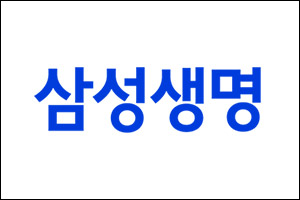








![12개월 최고 연 2.90%…Sh수협은행 'Sh첫만남우대예금' [이주의 은행 예금금리-7월 1주]](https://cfnimage.commutil.kr/phpwas/restmb_setimgmake.php?pp=006&w=69&h=45&m=5&simg=2025070414041902491300bf52dd2121131180157.jpg&nmt=18)
![기관 '리가켐바이오'·외인 '실리콘투'·개인 '레인보우로보틱스' 1위 [주간 코스닥 순매수- 2025년 6월30일~7월4일]](https://cfnimage.commutil.kr/phpwas/restmb_setimgmake.php?pp=006&w=69&h=45&m=5&simg=2025070421052305975179ad4390711823573102.jpg&nmt=18)
![코오롱 주가 3배 ‘폭등? 비결…4세 승계·인보사 기대감? [저PBR 숨은그림찾기]](https://cfnimage.commutil.kr/phpwas/restmb_setimgmake.php?pp=006&w=69&h=45&m=5&simg=2025070607245801101dd55077bc25812315225.jpg&nmt=18)
![[주간 보험 이슈] 우리금융 성대규號 동양생명·곽희필號 ABL생명 출범…C레벨 신한 출신 포진 外](https://cfnimage.commutil.kr/phpwas/restmb_setimgmake.php?pp=006&w=69&h=45&m=5&simg=20250706134559076368a55064dd1223388442.jpg&nmt=18)
![기관 '삼성전자'·외인 '삼성전자'·개인 '현대로템' 1위 [주간 코스피 순매수- 2025년 6월30일~7월4일]](https://cfnimage.commutil.kr/phpwas/restmb_setimgmake.php?pp=006&w=69&h=45&m=5&simg=2025070420532601207179ad4390711823573102.jpg&nmt=18)
![12개월 최고 연 5.20%, 제주은행 'MZ 플랜적금' [이주의 은행 적금금리-7월 1주]](https://cfnimage.commutil.kr/phpwas/restmb_setimgmake.php?pp=006&w=69&h=45&m=5&simg=2025070415154305446300bf52dd2121131180157.jpg&nmt=18)
![24개월 최고 연 3.25%…OSB저축은행 '인터넷정기예금'[이주의 저축은행 예금금리-7월 1주]](https://cfnimage.commutil.kr/phpwas/restmb_setimgmake.php?pp=006&w=69&h=45&m=5&simg=2025070618141001187957e88cdd521123419446.jpg&nmt=18)

![12개월 최고 연 3.40%…조은저축은행 '정기예금(서울본점)'[이주의 저축은행 예금금리-7월 1주]](https://cfnimage.commutil.kr/phpwas/restmb_setimgmake.php?pp=006&w=69&h=45&m=5&simg=2025070618004505454957e88cdd521123419446.jpg&nmt=18)







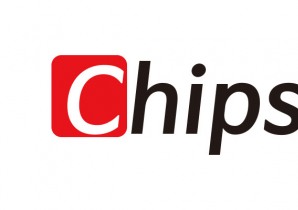
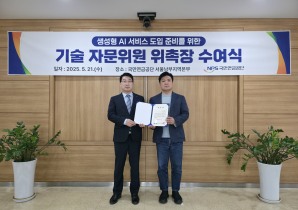




![[카드뉴스] KT&G ‘Global Jr. Committee’, 조직문화 혁신 방안 제언](https://cfnimage.commutil.kr/phpwas/restmb_setimgmake.php?pp=006&w=298&h=298&m=1&simg=202503261121571288de68fcbb3512411124362_0.png&nmt=18)
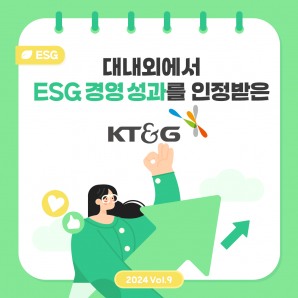

![[카드뉴스] 국립생태원과 함께 환경보호 활동 강화하는 KT&G](https://cfnimage.commutil.kr/phpwas/restmb_setimgmake.php?pp=006&w=298&h=298&m=1&simg=202403221529138957c1c16452b0175114235199_0.png&nmt=18)
![[카드뉴스] 신생아 특례 대출 조건, 한도, 금리, 신청방법 등 총정리...연 1%대, 최대 5억](https://cfnimage.commutil.kr/phpwas/restmb_setimgmake.php?pp=006&w=298&h=298&m=1&simg=20240131105228940de68fcbb35175114235199_0.jpg&nmt=18)
![[신간] 리빌딩 코리아 - 피크 코리아 극복을 위한 생산성 주도 성장 전략](https://cfnimage.commutil.kr/phpwas/restmb_setimgmake.php?pp=006&w=81&h=123&m=5&simg=2025032814555807705f8caa4a5ce12411124362.jpg&nmt=18)
![[신간] 지속 가능 경영, 보고와 검증](https://cfnimage.commutil.kr/phpwas/restmb_setimgmake.php?pp=006&w=81&h=123&m=5&simg=2025011710043006774f8caa4a5ce12411124362.jpg&nmt=18)
![[서평] 추세 매매의 대가들...추세추종 투자전략의 대가 14인 인터뷰](https://cfnimage.commutil.kr/phpwas/restmb_setimgmake.php?pp=006&w=81&h=123&m=5&simg=2023102410444004986c1c16452b0175114235199.jpg&nmt=18)

![[신간] 금융개혁 2035](https://cfnimage.commutil.kr/phpwas/restmb_setimgmake.php?pp=006&w=81&h=123&m=5&simg=2025070409385407936c1c16452b012411124362.jpg&nmt=18)
![[신간] 똑똑한 금융생활...건전한 투자와 건강한 재무설계 지침서](https://cfnimage.commutil.kr/phpwas/restmb_setimgmake.php?pp=006&w=81&h=123&m=5&simg=2025031015443705043c1c16452b012411124362.jpg&nmt=18)

![[AD] ‘상품성↑가격↓’ 현대차, 2025년형 ‘아이오닉 5’·‘코나 일렉트릭’ 출시](https://cfnimage.commutil.kr/phpwas/restmb_setimgmake.php?pp=006&w=89&h=45&m=1&simg=202505131018360969274925877362115218260.jpg&nmt=18)
![[AD] 현대차 ‘아이오닉9’·기아 ‘EV3’, ‘2025 탑기어 전기차 어워즈’ 수상](https://cfnimage.commutil.kr/phpwas/restmb_setimgmake.php?pp=006&w=89&h=45&m=1&simg=202505091106510520874925877362115218260.jpg&nmt=18)
![[카드뉴스] KT&G ‘Global Jr. Committee’, 조직문화 혁신 방안 제언](https://cfnimage.commutil.kr/phpwas/restmb_setimgmake.php?pp=006&w=89&h=45&m=1&simg=202503261121571288de68fcbb3512411124362_0.png&nmt=18)
![[AD] 기아, 혁신적 콤팩트 SUV ‘시로스’ 세계 최초 공개](https://cfnimage.commutil.kr/phpwas/restmb_setimgmake.php?pp=006&w=89&h=45&m=1&simg=2024123113461807771f9c516e42f12411124362.jpg&nmt=18)
![[AD] 아이오닉5 '최고 고도차 주행 전기차' 기네스북 올랐다...압도적 전기차 입증](https://cfnimage.commutil.kr/phpwas/restmb_setimgmake.php?pp=006&w=89&h=45&m=1&simg=2024123113204707739f9c516e42f12411124362.jpg&nmt=18)


